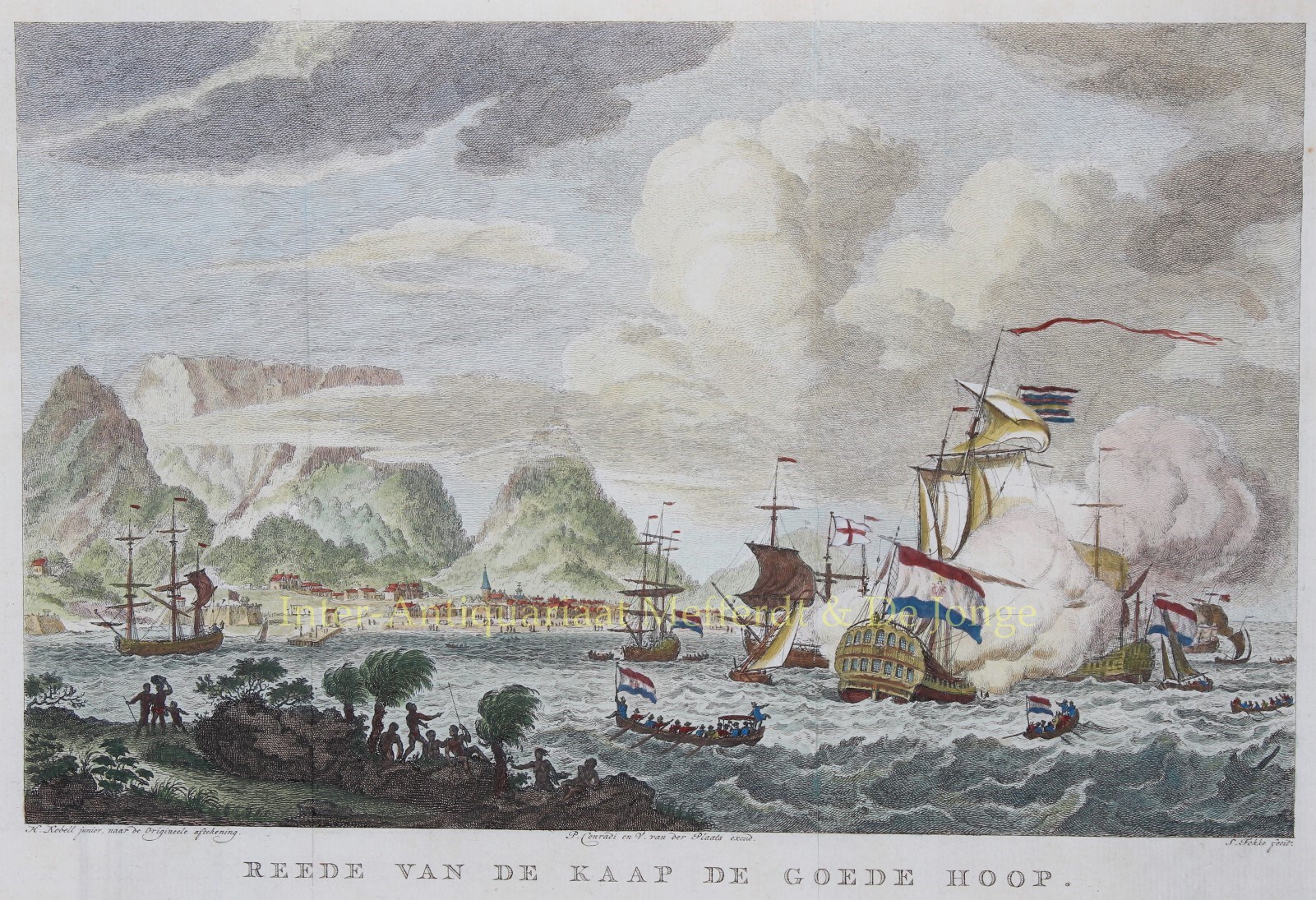Cape of Good of Hope – Simon Fokke after Hendrik Kobell, 1785
VIEW OF CAPE OF GOOD HOPE
“Reede van de Kaap de Goede Hoop”, etching made by Simon Fokke after a drawing by Hendrik Kobell, for the “Nieuwe algemene beschryving van de Kaap de Goede Hoop” [new general description of Cape of Good Hope] by Petrus Conradi and Volkert van der Plaats. Coloured by a later hand. Size (plate): 21 x 30,5 cm.
The first European to reach the cape was the Portuguese explorer Bartolomeu Dias in 1488, who named it the “Cape of Storms” (Cabo das Tormentas). It was later renamed by John II of Portugal as “Cape of Good Hope” (Cabo da Boa Esperança) because of the great optimism engendered by the opening of a sea route to India and the East.
Dutch colonial administrator Jan van Riebeeck established a resupply camp for the Dutch East India Company (VOC) in Table Bay in 1652 which eventually developed into Cape Town. Supplies of fresh food were vital on the long journey around Africa and Cape Town became known as “The Tavern of the Seas”.
The engraving shows Table Mountain and the VOC’s buildings and many Dutch and English ships in Table Bay.
In 1687 a community of Huguenots arrived at the Cape of Good Hope from the Netherlands. They had escaped to the Netherlands from France in order to flee religious persecution there. The Dutch East India Company needed skilled farmers at the Cape of Good Hope and the Dutch Government saw opportunities for the Huguenots at the Cape and sent them over. The colony gradually grew over the next 150 years or so until it stretched for hundreds of kilometres to the north and north-east.
Being the only permanent settlement of the Dutch East India Company not serving as a trading post, it proved an ideal retirement place for employees of the company. After several years of service in the company, employees could lease a piece of land in the colony as a Vryburgher (“free citizen”), on which they had to cultivate crops that they had to sell to the Dutch East India Company for a fixed price. As these farms were labour-intensive, Vryburghers imported slaves from Madagascar, Mozambique and Asia, which rapidly increased the number of inhabitants. After Louis XIV of France revoked the Edict of Nantes (October 1685), which had protected the right of Huguenots in France to practise their religion without persecution from the state, the colony attracted many Huguenot settlers, who eventually mixed with the general Vryburgher population.
In the 18th century Great Britain took control of the Dutch colonies and captured also Cape Town.
Price: SOLD


